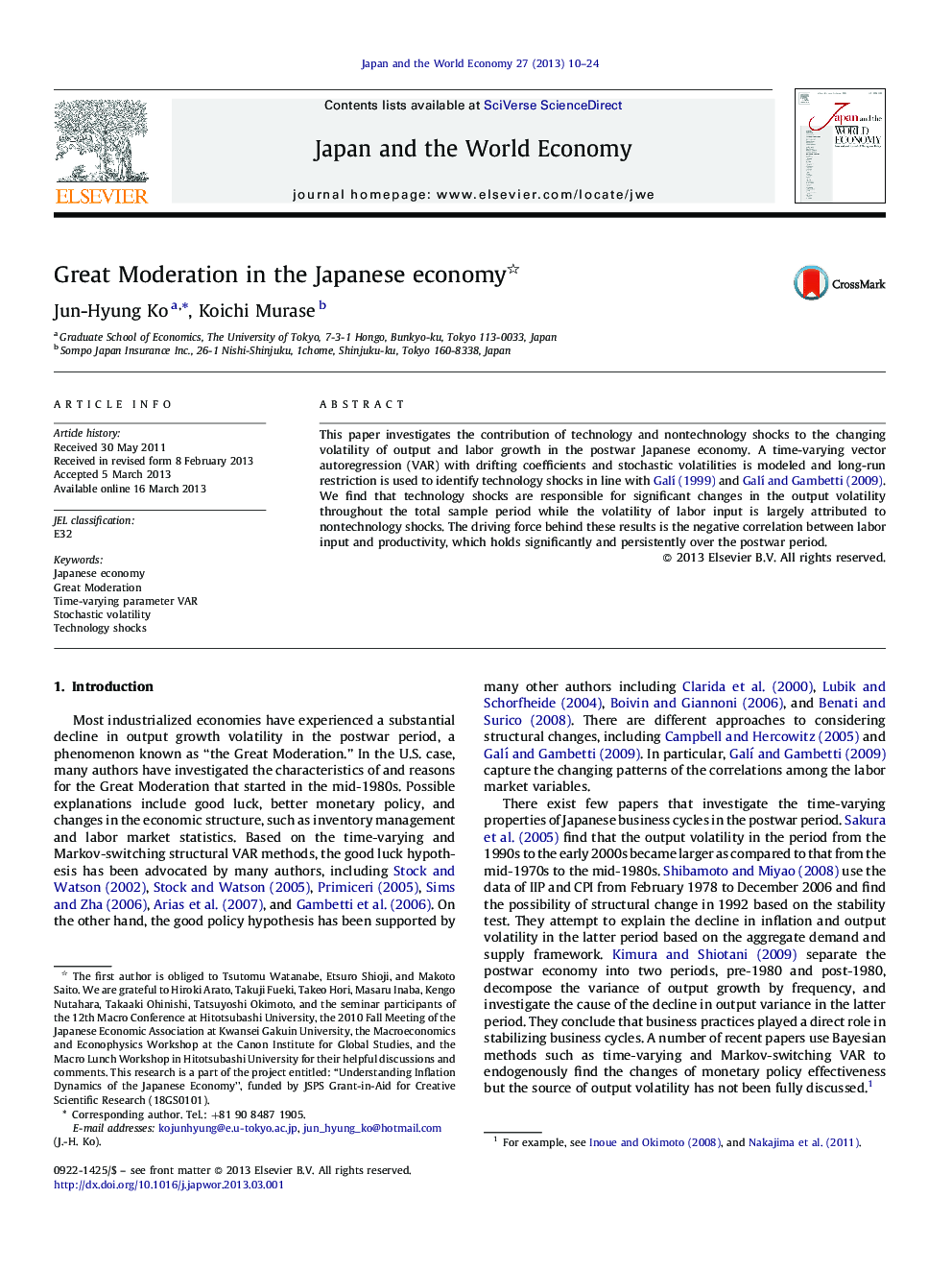| Article ID | Journal | Published Year | Pages | File Type |
|---|---|---|---|---|
| 5086162 | Japan and the World Economy | 2013 | 15 Pages |
â¢We examine the changing dynamics and sources of volatility of GDP growth.â¢We find that technology shocks are mainly responsible for the output volatility.â¢The volatility of labor input is attributed to nontechnology shocks.â¢The driving force is the negative correlation between labor input and productivity.â¢The negative correlation holds significantly and persistently over the sample period.
This paper investigates the contribution of technology and nontechnology shocks to the changing volatility of output and labor growth in the postwar Japanese economy. A time-varying vector autoregression (VAR) with drifting coefficients and stochastic volatilities is modeled and long-run restriction is used to identify technology shocks in line with Galà (1999) and Galà and Gambetti (2009). We find that technology shocks are responsible for significant changes in the output volatility throughout the total sample period while the volatility of labor input is largely attributed to nontechnology shocks. The driving force behind these results is the negative correlation between labor input and productivity, which holds significantly and persistently over the postwar period.
